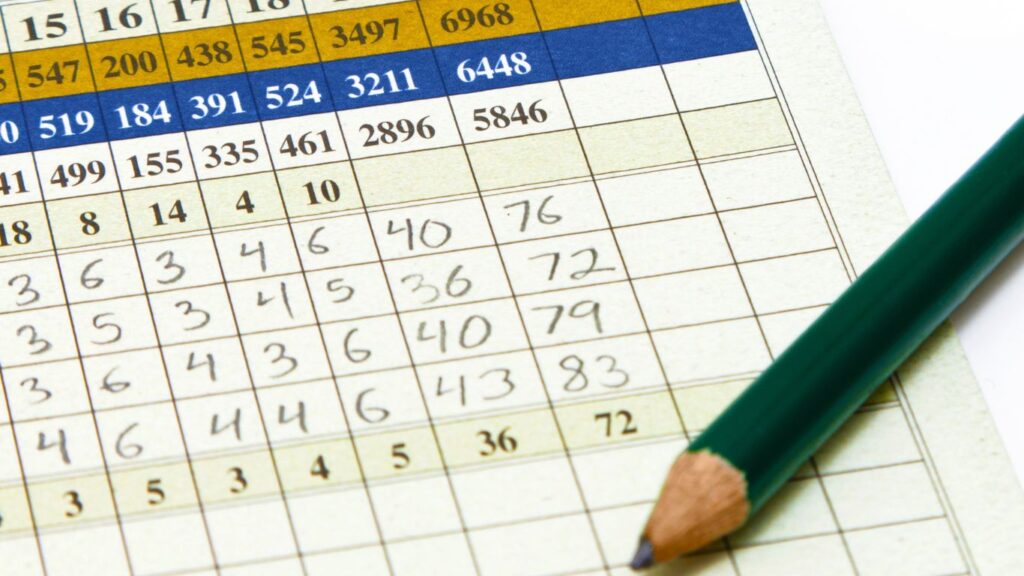Ever found yourself intrigued by the unique golf game known as greensomes? Or perhaps you’re already a fan, looking for ways to elevate your play.
Whichever camp you fall into, this guide will walk you through the ins and outs of this fascinating format, ensuring both novices and seasoned golfers glean something new.
Mastering the Tee Shot in Golf Greensomes
The tee shot is often the foundation of any good golf game. But in greensomes, it’s crucial. This format involves both players teeing off, and then selecting the best tee shot to continue with.
From there, the player who didn’t hit the best tee shot will play the second shot. So, focusing on consistency with your tee shots can be a game-changer.
Alternate Shot Play: The Heart of Greensomes Golf

A unique aspect of greensomes is the alternate shot system. After the best tee shot is chosen, players will play alternate shots until the ball is holed.
This offers a twist from the traditional match play or stroke play format, pushing players to strategize and plan more intricately.
The alternate shots method means one bad shot doesn’t necessarily spell doom. Team play becomes vital, and choosing your playing partner wisely can be as pivotal as your actual game skills.
Navigating the Greensomes Format: Number of Tee Shots and More
In greensomes golf, the only difference from Canadian foursomes is how tee shots are approached.
Odd numbered holes usually see only one golfer tees off, with even numbered holes letting the other team member have a go. This mix keeps things interesting, pushing both players to be on top of their game.
With this format, the number of tee shots each player hits becomes strategically important. It’s not just about hitting well, but also about knowing when to play conservatively or aggressively.
Understanding Handicap Allowances in Greensomes
The beauty of greensomes is its inclusive nature. The format includes a handicap allowance, leveling the playing field.
Typically, Player A (the golfer with the lowest handicap) receives 60% of their handicap, and Player B (with the highest handicap) gets 40%. For those playing greensomes in competitions like the Ryder Cup, understanding these greensomes handicap nuances can be paramount.
Enhancing Your Game: Strategies and Tips
With the basics covered, let’s delve into some pro tips:
1. Approach Shots Matter
After that crucial second shot, the approach shot becomes a focal point. Hone this skill to get closer to the pin and make putting a breeze.
2. Team Dynamics
In greensomes, team play is the name of the game. Ensure you and your playing partner understand each other’s strengths and weaknesses. Communication is key.
3. Golf Balls and Equipment
While it might seem trivial, selecting the right golf balls can significantly impact your game. Experiment and find what works best for you.
4. Understanding the Course
Knowledge of the hole you’re playing can give you an advantage. Whether you’re a good driver aiming for a long tee shot or strategizing around a tricky green, course knowledge is paramount.
Conclusion: The Joy of Playing Greensomes
Whether you’re a seasoned golfer looking for a twist on the traditional game or a newbie intrigued by the alternate shots and team dynamics, greensomes offers a refreshing change of pace. So, the next time you hit the greens, consider diving into this format. It’s not just about the shots you play, but also the camaraderie and strategy that come with teaming up.
Happy golfing! And remember, every shot, every hole, and every play brings a new opportunity to learn and grow in the game we all love.
FAQs
How do you play greensomes in golf?
Greensomes is a variation of golf where two players form a team and both hit tee shots from each tee. After the tee shots, the team selects the best ball and continues play with that ball, taking alternate shots until the hole is completed. This format can be played as match play, where the team with the lowest number of strokes wins the hole, or as stroke play, where the total strokes are counted at the end of the round.
What’s the difference between greensomes and Foursomes?

Both greensomes and foursomes are team formats involving two players, but they have distinct rules. In foursomes, players alternate hitting the same ball, with one player hitting all the tee shots on odd-numbered holes and the other on even-numbered holes. In contrast, in greensomes, both players hit tee shots, then choose the best one to play alternately from there until the hole is completed.
How do you work out the handicap in greensomes?
In greensomes, the handicap allowance is often calculated by combining a percentage of both players’ handicaps. Typically, the player with the lower handicap (Player A) receives 60% of their handicap, while the player with the higher handicap (Player B) receives 40% of theirs. The total is then used as the team’s handicap for the round.
What is American greensomes format?
American greensomes, also known as Pinehurst or Chapman, is a slight variation of the standard greensomes. Both players on a team tee off, then they switch balls for their second shot. After the second shot, they choose the best ball and play alternate shots from that point until the hole is completed.







